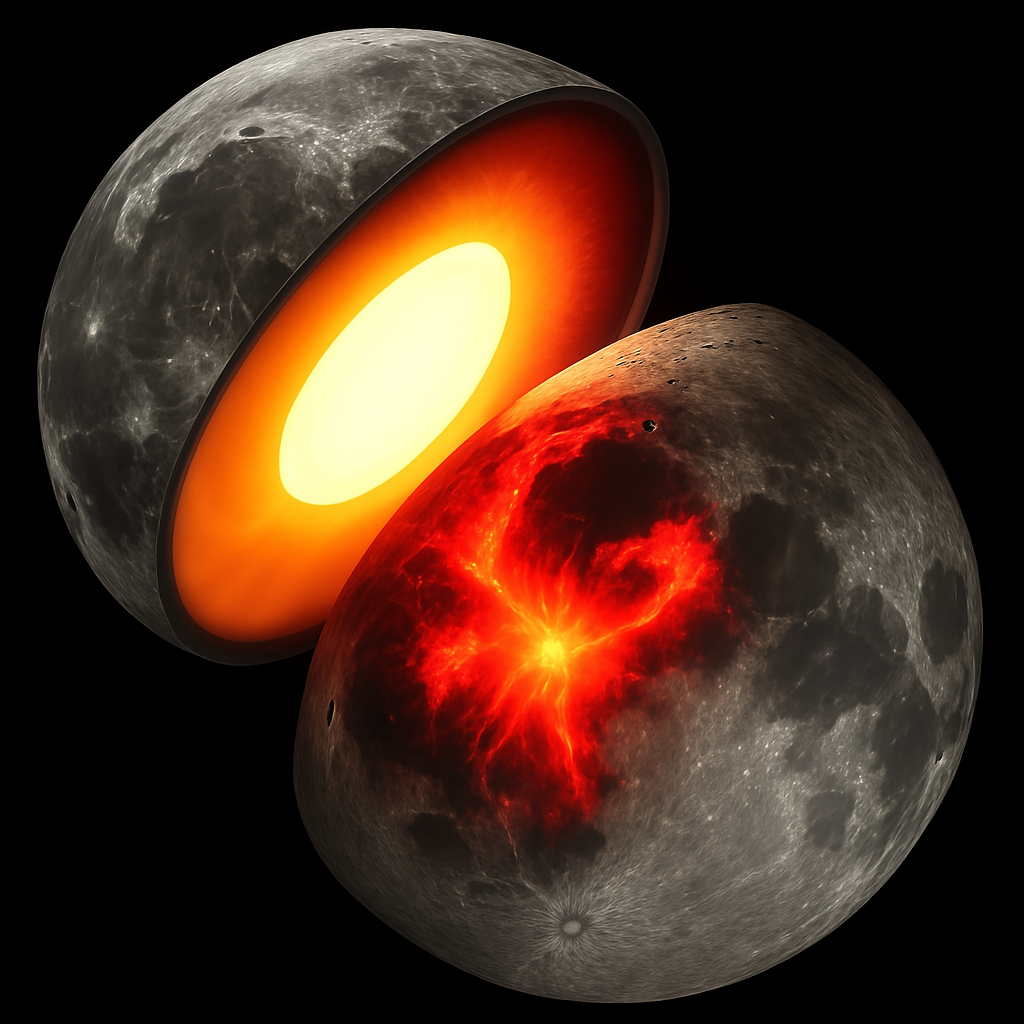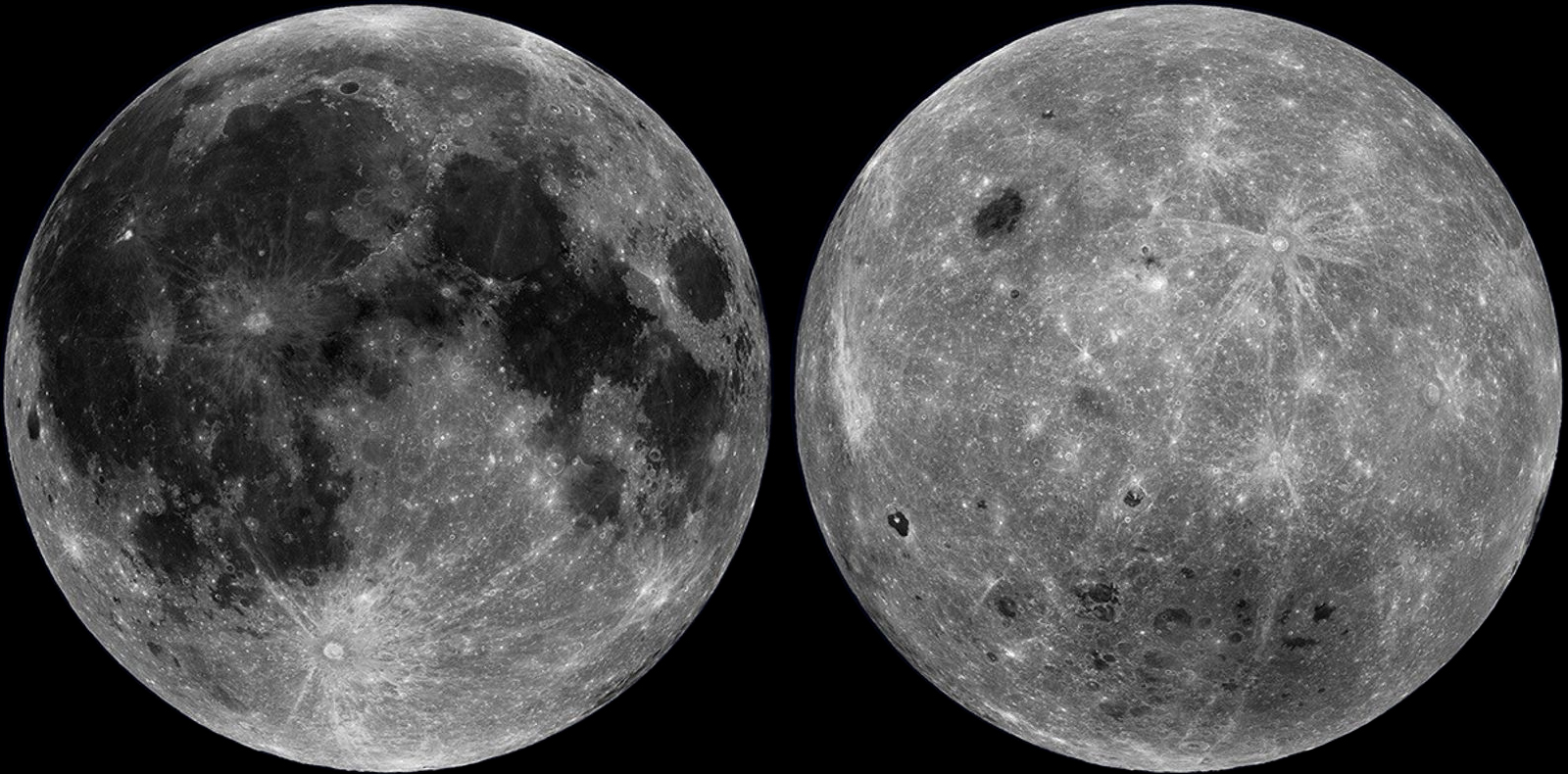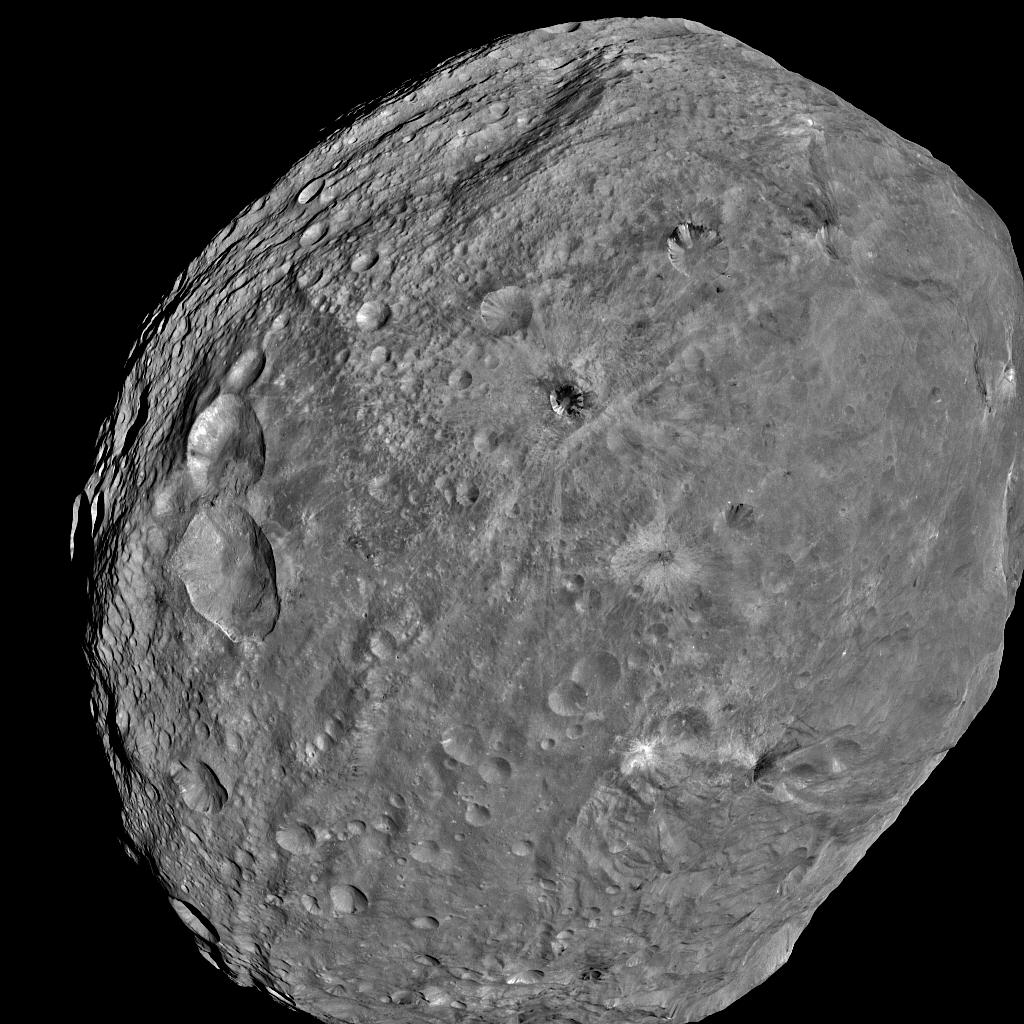6 min read

Analyzing gravity data collected by spacecraft orbiting other worlds reveals groundbreaking insights about planetary structures without having to land on the surface.
Although the Moon and the asteroid Vesta are very different, two NASA studies use the same technique to reveal new details about the interiors of both.
In the lunar study, published May 14 in the journal Nature, researchers developed a new gravity model of the Moon that includes tiny variations in the celestial body's gravity during its elliptical orbit around Earth. These fluctuations cause the Moon to flex slightly due to Earth's tidal force - a process called tidal deformation - which provides critical insights into the Moon's deep internal structure.
Using their model, the researchers produced the most detailed lunar gravitational map yet, providing future missions an improved way to calculate location and time on the Moon. They accomplished this by analyzing data on the motion of NASA's GRAIL (Gravity Recovery and Interior Laboratory) mission, whose spacecraft, Ebb and Flow, orbited the Moon from Dec. 31, 2011, to Dec. 17, 2012.

In a second study, published in the journal Nature Astronomy on April 23, the researchers focused on Vesta, an object in the main asteroid belt between Mars and Jupiter. Using NASA's Deep Space Network radiometric data and imaging data from the agency's Dawn spacecraft, which orbited the asteroid from July 16, 2011, to Sept. 5, 2012, they found that instead of having distinct layers as expected, Vesta's internal structure may be mostly uniform, with a very small iron core or no core at all.
Both studies were led by Ryan Park, supervisor of the Solar System Dynamics Group at NASA's Jet Propulsion Laboratory in Southern California, and were years in the making due to their complexity. The team used NASA supercomputers to build a detailed map of how gravity varies across each body. From that, they could better understand what the Moon and Vesta are made of and how planetary bodies across the solar system formed.
"Gravity is a unique and fundamental property of a planetary body that can be used to explore its deep interior," said Park. "Our technique doesn't need data from the surface; we just need to track the motion of the spacecraft very precisely to get a global view of what's inside."
Lunar Asymmetry
The lunar study looked at gravitational changes to the Moon's near and far sides. While the near side is dominated by vast plains - known as mare - formed by molten rock that cooled and solidified billions of years ago, the far side is more rugged, with few plains.

Some theories suggest intense volcanism on the near side likely caused these differences. That process would have caused radioactive, heat-generating elements to accumulate deep inside the near side's mantle, and the new study offers the strongest evidence yet that this is likely the case.
"We found that the Moon's near side is flexing more than the far side, meaning there's something fundamentally different about the internal structure of the Moon's near side compared to its far side," said Park. "When we first analyzed the data, we were so surprised by the result we didn't believe it. So we ran the calculations many times to verify the findings. In all, this is a decade of work."
When comparing their results with other models, Park's team found a small but greater-than-expected difference in how much the two hemispheres deform. The most likely explanation is that the near side has a warm mantle region, indicating the presence of heat-generating radioactive elements, which is evidence for volcanic activity that shaped the Moon's near side 2 billion to 3 billion years ago.






